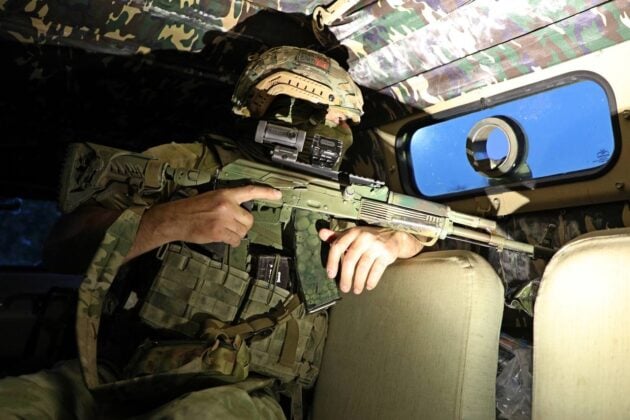Report: Russia adopts new infantry doctrine amid manpower strain

Russian forces are adopting a new infantry doctrine that places greater reliance on drones and robotic systems due to manpower challenges, according to an analysis by the DeepState OSINT project in cooperation with the Telegram channel Mannerheims son.
The report said the Russian military is increasingly turning to unmanned ground systems, loitering munitions, and heavy first-person-view (FPV) drones. Analysts noted that Moscow faces growing shortages of infantry, leading to an effort to substitute technology for personnel in frontline operations.
One of the main elements of the shift is the expanded use of unmanned ground platforms and strike drones to reduce the exposure of assault groups. The report explained that whereas in 2024 Russian troops sometimes attempted assaults with minimal small arms and improvised methods, today the objective is to transfer these tasks to unmanned systems to avoid detection and preserve manpower.
The second aspect of the doctrine is the reduction of large-scale infantry assaults. The analysis noted that columns of 30 to 60 troops are no longer observed. Instead, assault actions are increasingly conducted by small groups of two to four soldiers, supported by drones. While the number of groups has increased, each operates in a dispersed and independent manner.
A third aspect is minimizing small arms battles and direct frontal attacks against Ukrainian defensive positions. According to the assessment, drones now play a greater role as fire support, providing cover for assault groups and reducing reliance on close-range infantry engagements.
The fourth element involves attempts to outflank or bypass primary Ukrainian defensive lines, followed by infiltration into the rear by diversionary units. The report cited tactics such as those observed near Zolotyi Kolodyaz, where Russian forces advanced step by step, attempting to penetrate deep into Ukrainian rear areas in search of command posts and mortar positions.
The assessment underscores how the Russian military has moved away from earlier tactics that relied heavily on massed infantry assaults, which often resulted in high casualties. Instead, Moscow is focusing on integrating robotics and drones into offensive operations to offset shortages of trained personnel and sustain pressure on Ukrainian defenses.
Unmanned ground vehicles have been increasingly tested by Russia in recent months, alongside expanded use of FPV drones for both reconnaissance and strike roles. These developments suggest that the Kremlin is investing resources into automating certain combat tasks traditionally performed by infantry.
Early, speaking to Defence Blog, Samuel Bendett, an advisor with the Russia Studies Program at CNA, said:
“There has been a noted improvement in Russia’s tactical UAVs over the past several years, both in the quality of FPVs, quadcopters and fixed-wing variants developed, and their growing quantity at the front. Certain issues still remain – such as uneven supply of tactical drones across the front (most often noted by commentators and volunteers), continued reliance on imported components from China and on actual China-made drones like DJI Mavic series, uneven level of drone pilot training, and uneven quality control for numerous tactical drone types now present at the front.”
According to the report, this doctrinal adjustment reflects both necessity and adaptation. Russia’s reliance on smaller assault groups, coupled with technological integration, indicates an effort to maintain offensive capability despite manpower strains.
At the same time, the increased emphasis on drones highlights the evolving nature of combat on the eastern front, where unmanned systems now play a central role.
The Ukrainian Defense Forces continue to counter these tactics through layered defenses, electronic warfare, and their own expanding drone capabilities. However, the report suggests that Russia’s shift toward automation and small-unit operations could influence the tempo and shape of fighting in the months ahead.





